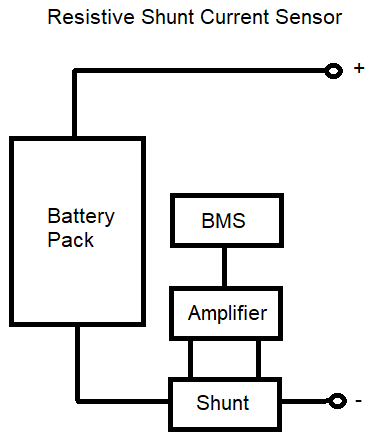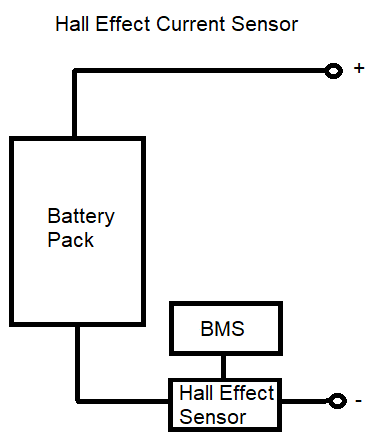How to Sense Current in a Battery Management System

In this article, we go over how to sense current in a battery management system which is important for safety reasons.
Being able to effectively monitor current is important to monitor battery pack safety and for most state-of-charge and state-of-health algorithms.
Battery management systems must not only monitor temperature and voltage but must also monitor current in its system. It must be able to ensure that excessive amounts of current are not flowing through the system. They're required to log abuse conditions.
In order to monitor electrical current through a BMS, we cannot measure current directly. We can only measure voltage directly. In order to measure current, we must measure the voltage through a resistor, and then we can infer what the current is.
There are 2 basic methods to monitor current in a BMS.
The 2 methods are using a resistive shunt or using a Hall-effect mechanism.
Resistive Shunt Current Sensor
This can be seen in the circuit diagram below.

We want the resistor outside the battery pack to be of a precise low value, or else it will dissipate a lot of the output energy.
However, since the resistor's value is so small, it produces a small voltage drop across it. In order to be able to detect this voltage, we first amplify the voltage signal before passing it on to be read by the BMS.
Once the amplification factor is known, to get the original signal, you would just divide the number by the amplification factor.
By ohm's law, we know that the current passing through a resistor is equal to the voltage drop across the resistor divided by the value of the resistor. Thus, we can calculate the current flowing through a resistor.
The advantage of using resistive shunts have no offset at zero current. The downsides of resistive shunts are that
they provide no electrical isolation. So in order to get electrical isolation if a device uses multiple power sources, additional
isolation circuitry would have to be added.
Hall Effect Current Sensing
The other most common way of sensing current in a BMS is by using a hall effect sensor.
The physics behinds hall effect sensing is that if a coil is wrapped around a primary current-carrying conductor, the electromagnetic field produced by the conductor induces a secondary current in the coil. Hall effect sensors measure this induced current to infer the primary current.
Hall effect sensors have no direct electrical connection between the battery pack and itself.
A hall effect sensor has an opening that allows a wire to be inserted. A coil wrapped around this wire will then have a secondary current induced in it. The hall effect sensor has internal conditioning circuit that will convert this induced current into an output voltage, which the BMS can read.
This can be seen in the circuit diagram below.

The advantage of hall effect current sensors is that they provide electrical isolation from the battery pack, so
the two power systems are not interconnected; so with hall effect sensors, no isolation circuitry is needed. The downsides to using
hall effect sensors is the presence of current offset. Anther downside of hall effect sensors is
the effects of magnetic hysteresis, which makes the induced current a product of not only the instantaneous current passing the
primary wire but also past current. So feedback circuitry is needed to guard against this.
In summary, both resistive shunt and hall effect sensor circuits are used in battery management systems to sense circuit to monitor current and log abuse conditions.
Resistive shunt circuits are desirable due to the zero current offset .
Hall effect sensor circuits are desirable due to the electrical isolation that they provide.
So these are two ways to sense current in a battery management system.
Related Resources
